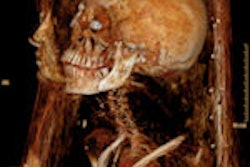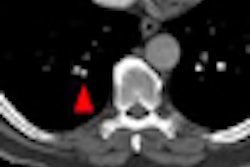Dear AuntMinnie Insider,
In a few short months since publication of the National CT Colonography Trial (ACRIN 6664), its database has already undergone a thorough lavage by researchers looking for insights that might inform the future practice of virtual colonoscopy (also known as CT colonography, or CTC).
First came an October report that tied training to performance at polyp detection in the large, multicenter trial. If readers are provided with comprehensive training and testing, Dr. Joel Fletcher and colleagues found, they don't necessarily need years of experience to perform expertly.
Then, Dr. Mark Kuo and colleagues examined the effect of the three main cathartic bowel preparations used in the landmark study: sodium phosphate, magnesium citrate, and polyethylene glycol. Find out how each performed and how they compared by clicking here.
Finally, Dr. Amy Hara and her team wanted to know what separated merely average readers from really good readers of virtual colonoscopy images in the ACRIN trial. Look for the group's surprising findings in this issue's Insider Exclusive, brought to our subscribers before others can read it.
Across the pond, Dutch researchers examined the performance of VC readers using primary 2D and 3D -- and found that novice readers do better versus experienced readers using a primary 3D interpretation method. Get the details here.
In Brussels, EU Health Commissioner Androulla Vassiliou said that colon cancer screening rates must double in Europe to avoid a sharp rise in colon cancer cases that are expected to challenge a rapidly aging population. In San Francisco, the principal investigator of the ACRIN CTC trial said that a tug-of-war between medical subspecialties could impede progress in the battle to get more older individuals screened for colon cancer.
A new study in the American Journal of Gastroenterology warns that virtual colonoscopy could leave substantial numbers of high-risk polyps undetected, a conclusion disputed in the VC camp.
Meanwhile, gastroenterologists in Florida aim to minimize the risk of complications at colonoscopy by performing a high-tech in vivo assessment of lesions to look for signs of advanced histology.
Virtual colonoscopy has a new trick up its own sleeve, say researchers from Denmark who used MR colonography to distinguish benign from malignant colonic strictures. You'll find these stories and more in your Virtual Colonoscopy Digital Community -- just scroll down to view the rest.




















